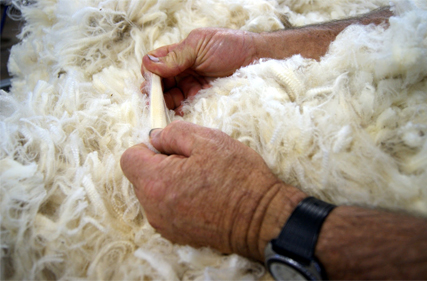 The commodity price boom – which has seen some agricultural commodities rise to seven-year highs in recent months – has “rubbed off” on the wool market with prices recovering from last year’s lows, albeit not to the same heady highs, according to agribusiness banking specialist Rabobank.
The commodity price boom – which has seen some agricultural commodities rise to seven-year highs in recent months – has “rubbed off” on the wool market with prices recovering from last year’s lows, albeit not to the same heady highs, according to agribusiness banking specialist Rabobank.
Speaking on RaboResearch podcast Booming commodity prices rubbing off on wool Rabobank analyst Dennis Voznesenski said while some of the factors driving soft commodity prices higher – such as speculative fund activity and government intervention – did not apply to the wool market, the broader global economic recovery was driving demand for commodities and this was having a knock-on effect on wool.
“These factors are having an impact on the price of other fibres, including cotton, while synthetic fibres, which are derived from oil, and have also been part of the commodity boom,” Mr Voznesenski said.
Cotton prices have increased by 15 per cent this year, with oil up by 47 per cent in the year to date, he said.
While cotton is not a direct substitute for wool, “cotton prices have a positive relationship to wool in Rabobank’s wool price model, reflecting general demand for apparel, with moves in cotton commonly associated with similar direction moves in wool”, Mr Voznesenski said.
“Even though cotton prices have been rising, we have actually seen wool prices rise faster. The price spread between wool and cotton in US dollar terms has been increasing since late last year, indicating wool is becoming more expensive relative to cotton.
“That said, it was starting from a low base, with the smallest spreads in over a decade recorded in August last year, and it is yet to reach the five-year average.”
Mr Voznesenski said while wool prices had not risen to seven-year highs like some other soft commodities, the Eastern Market Indicator (EMI) was 27 per cent higher than the beginning of the year and had “cracked through the 1400 cent mark for the first time in over a year”.
“Super-fine wool micron prices have left coarser wool behind, recovering the price drops from last year and now exceeding prices from early 2020,” he said, “with 17 micron wools rising by 88 per cent since last year’s September low.
“While medium wools have recovered, they have not seen the same rise in prices, with 20 micron wool increasing by 62 per cent over the same period.”
Improving apparel sales in key end markets, particularly for knitwear and the close-to-skin sectors, together with the associated improvement in processor sentiment was largely behind the upswing, Mr Voznesenski said.
-Rabobank
